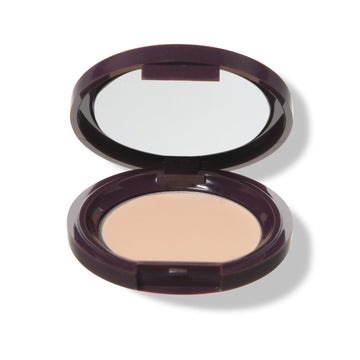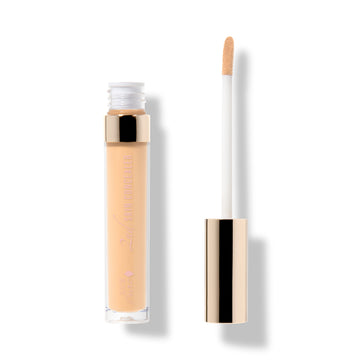Get the scoop on our two favorite fruit pigmented concealers, and 4 tips for how to apply concealer!
Written by: 100% Pure®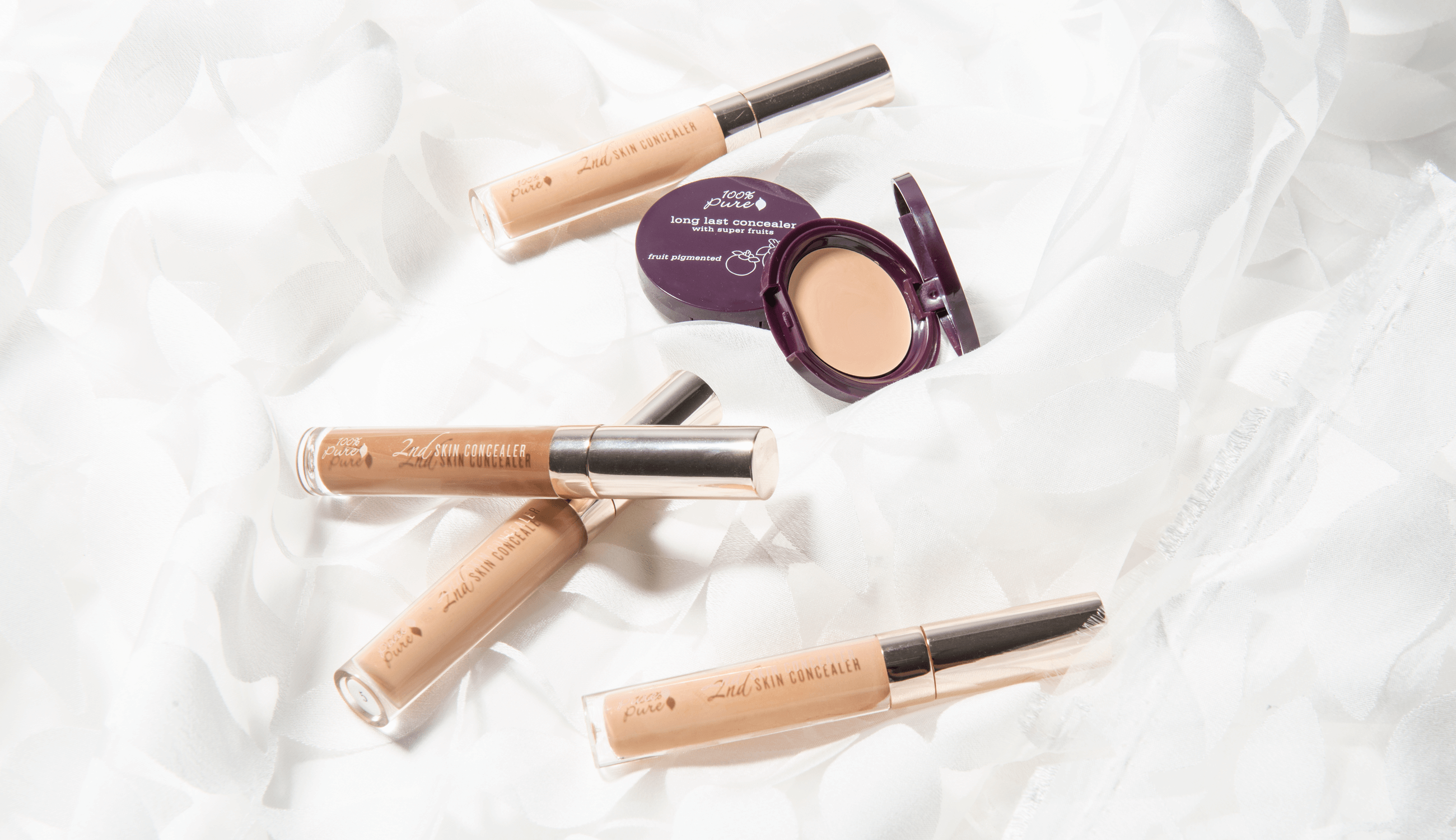
Desert island beauty essentials: mascara, lipstick, concealer. This little beauty product is our ride-or-die, our knight in shining armor, and our secret weapon. Concealers are designed to deliver opaque, long-wearing pigment that covers anything from your common pimple to an embarrassing tattoo. Using a natural concealer will give you nourishing benefits for skin, plus total coverage for those pesky pimples you’d rather keep under-wraps!
Which Natural Concealer Should I Choose?
Not all concealers are created equal. If you’re looking for a concealer that can soften skin, neutralize acne-causing bacteria, and offer anti-aging benefits -- you’re in the right place. Check out these two skin healthy, synthetic-free, fruit pigmented concealers that offer impeccable coverage.
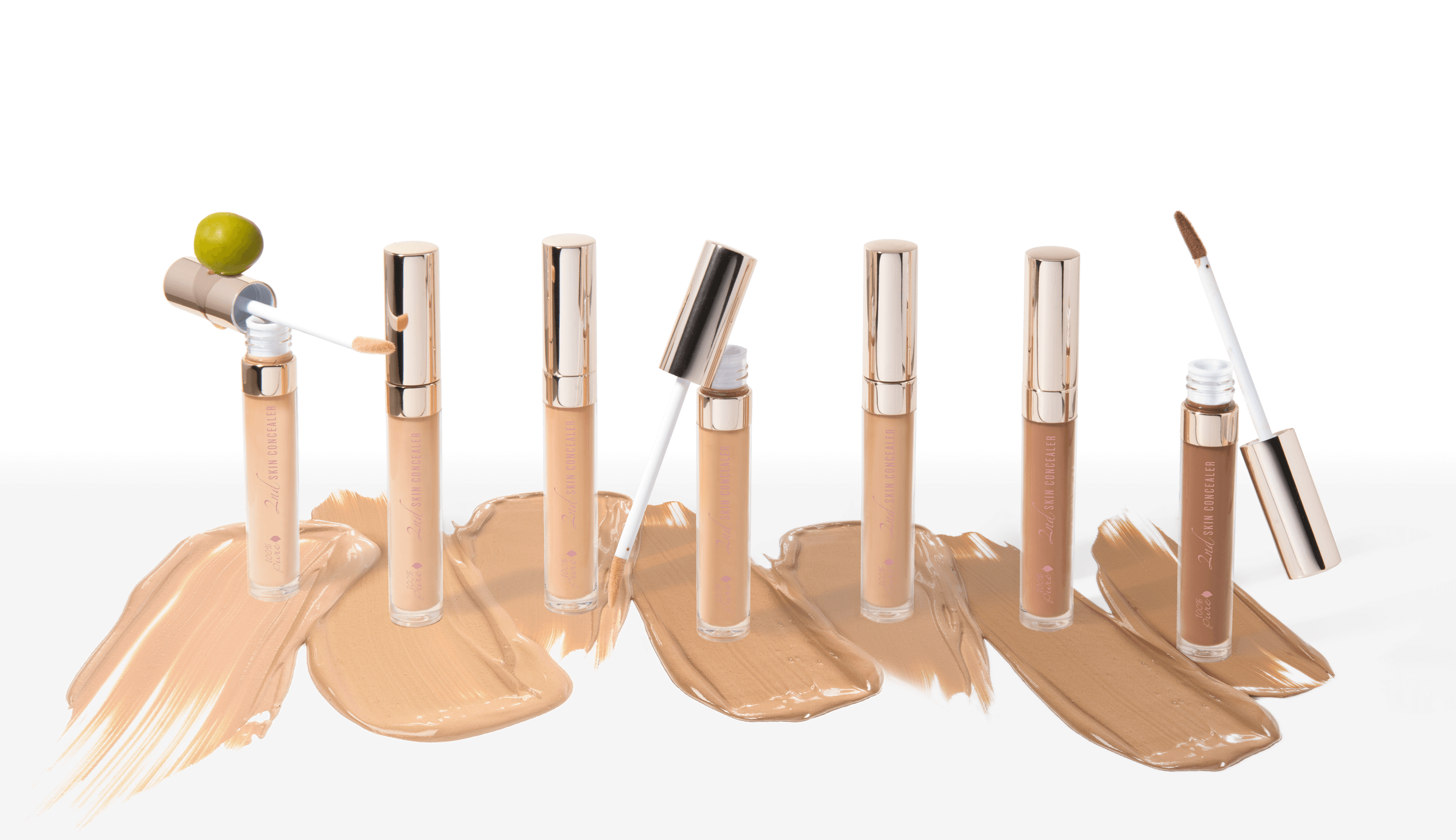
2nd Skin Concealer
Coverage: Medium to Full Coverage
Finish: Matte
Skin Types: All
Key Ingredients: Olive Squalane, Rice Starch, Rosemary
Shade Range: 1-7
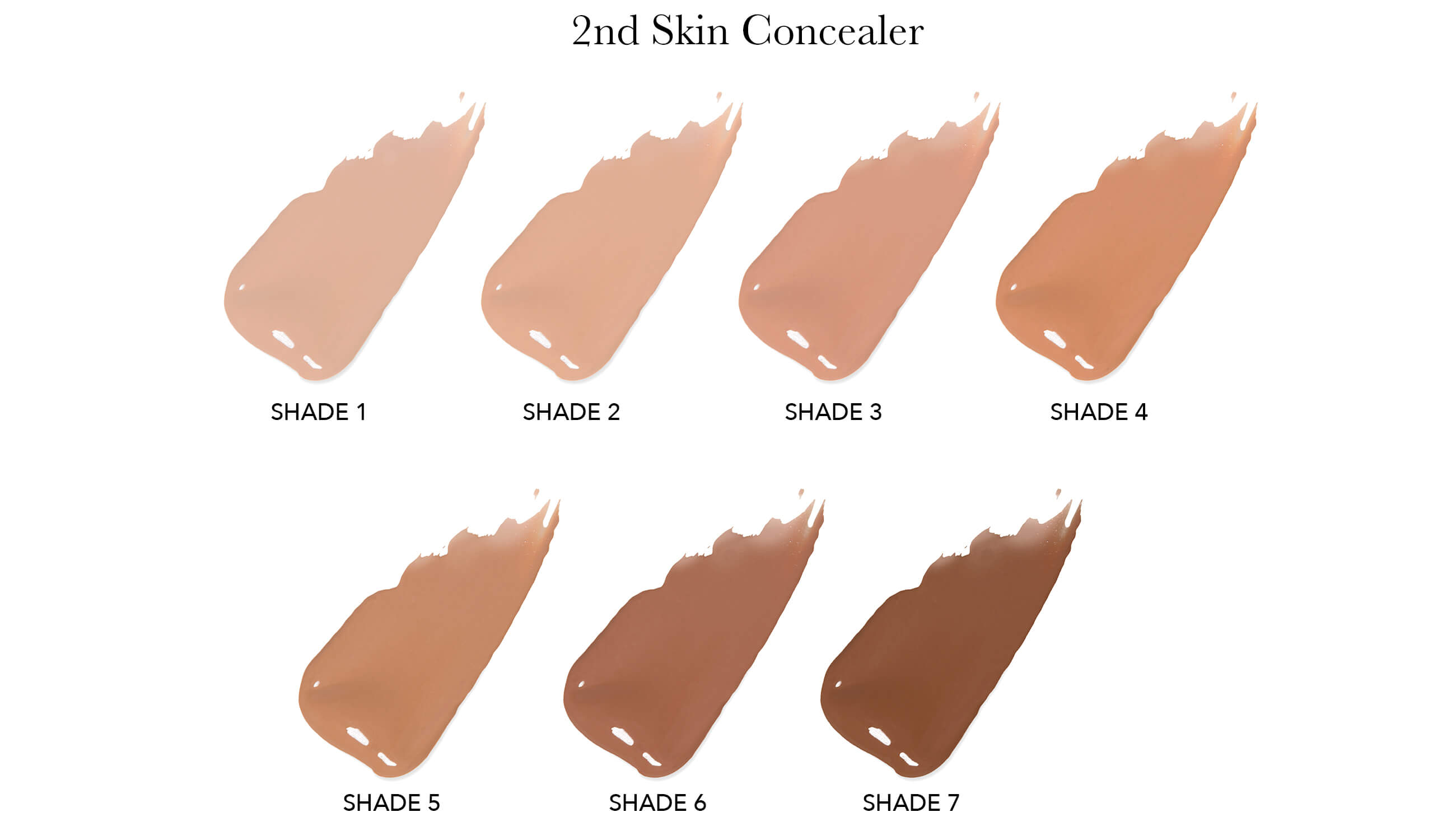
Do you love our 2nd Skin Foundation? Meet its perfect companion! Our creamy natural concealer is made with the same hydrating olive squalane. This formula is blendable and buildable, which allows you to get the level of coverage you need with a natural, matte finish. The luxurious fruit dyed makeup (fruit pigments) will feel and look like your second skin. Use the wand applicator to gently dot concealer on blemished areas or under eye circles.
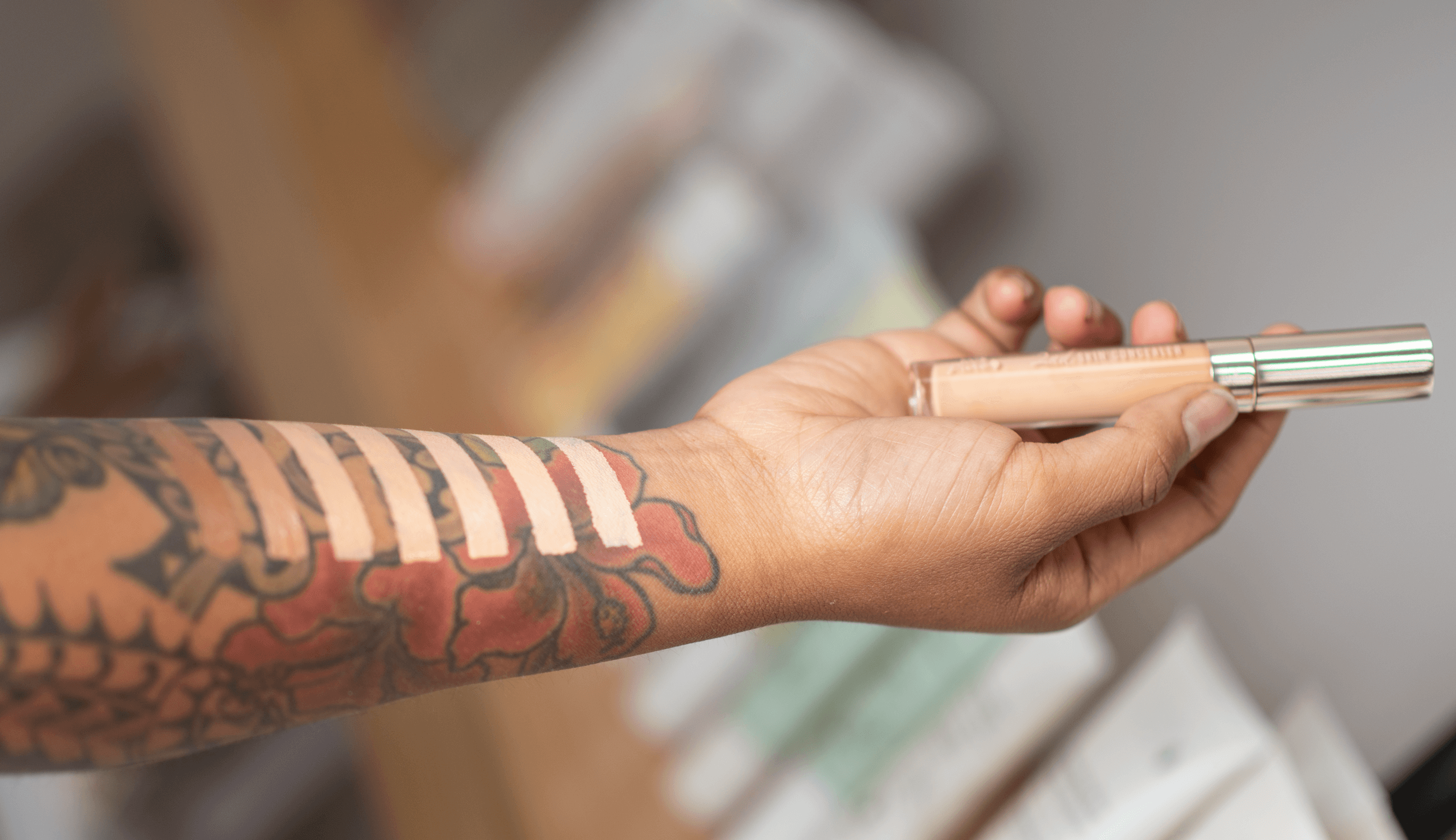
More perks of our 2nd Skin Concealer:
- Great for highlighting and contouring
- Silky, cream-liquid formula
- Sponge tip applicator
- Won’t crack or crease, thanks to absorbant olive squalane base
- Moisturizing and lightweight
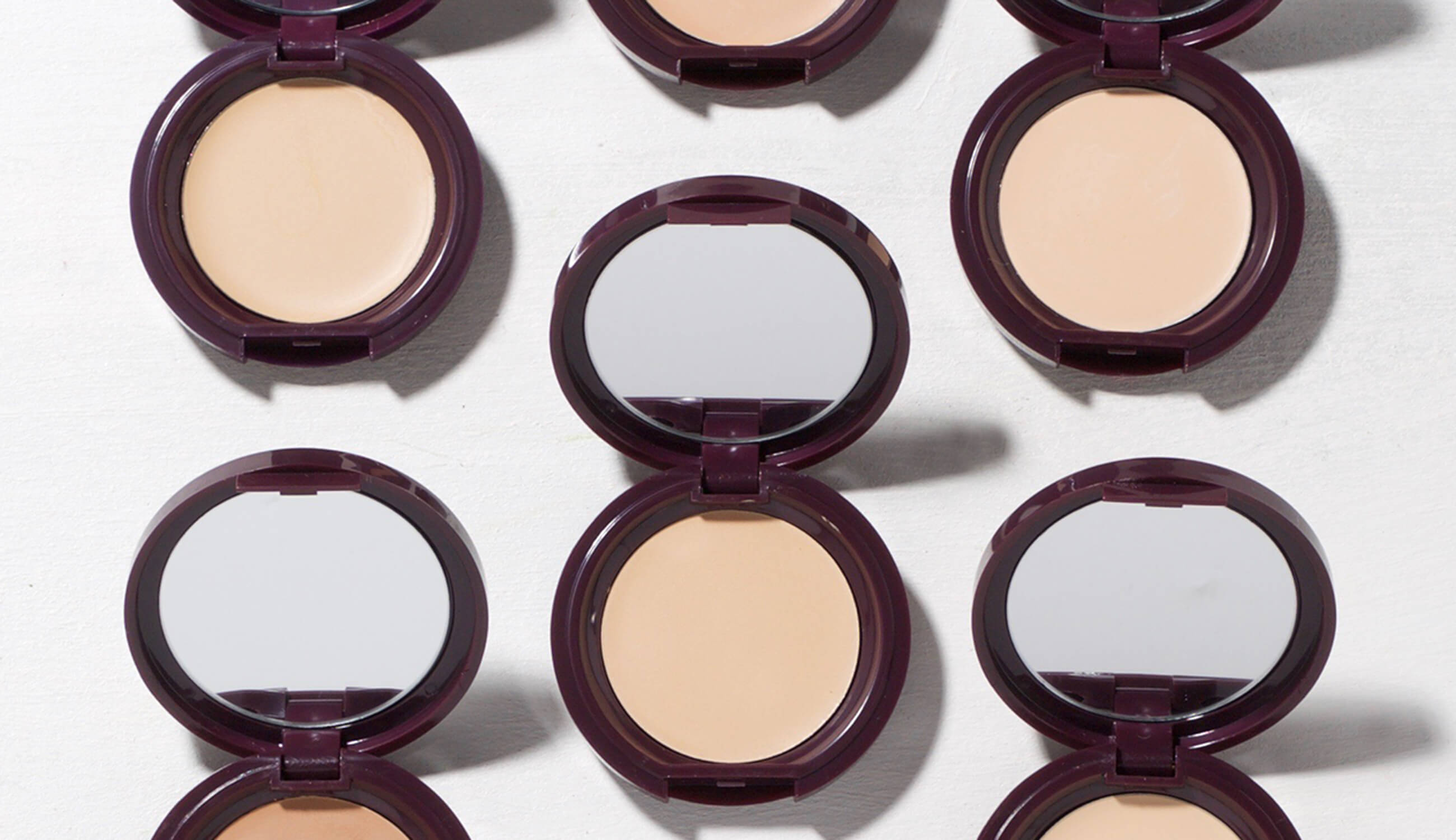
Fruit Pigmented® Long Last Concealer with Super Fruits
Coverage: Full Coverage
Finish: Satin
Skin Types: Normal, dry, combination, sensitive, acne-prone, aging
Key Ingredients: Rosehip Oil, Goldenseal, Green Coffee
Shade Range: Alpine Rose, Creme, White Peach, Peach Bisque, Golden Peach, Toffee
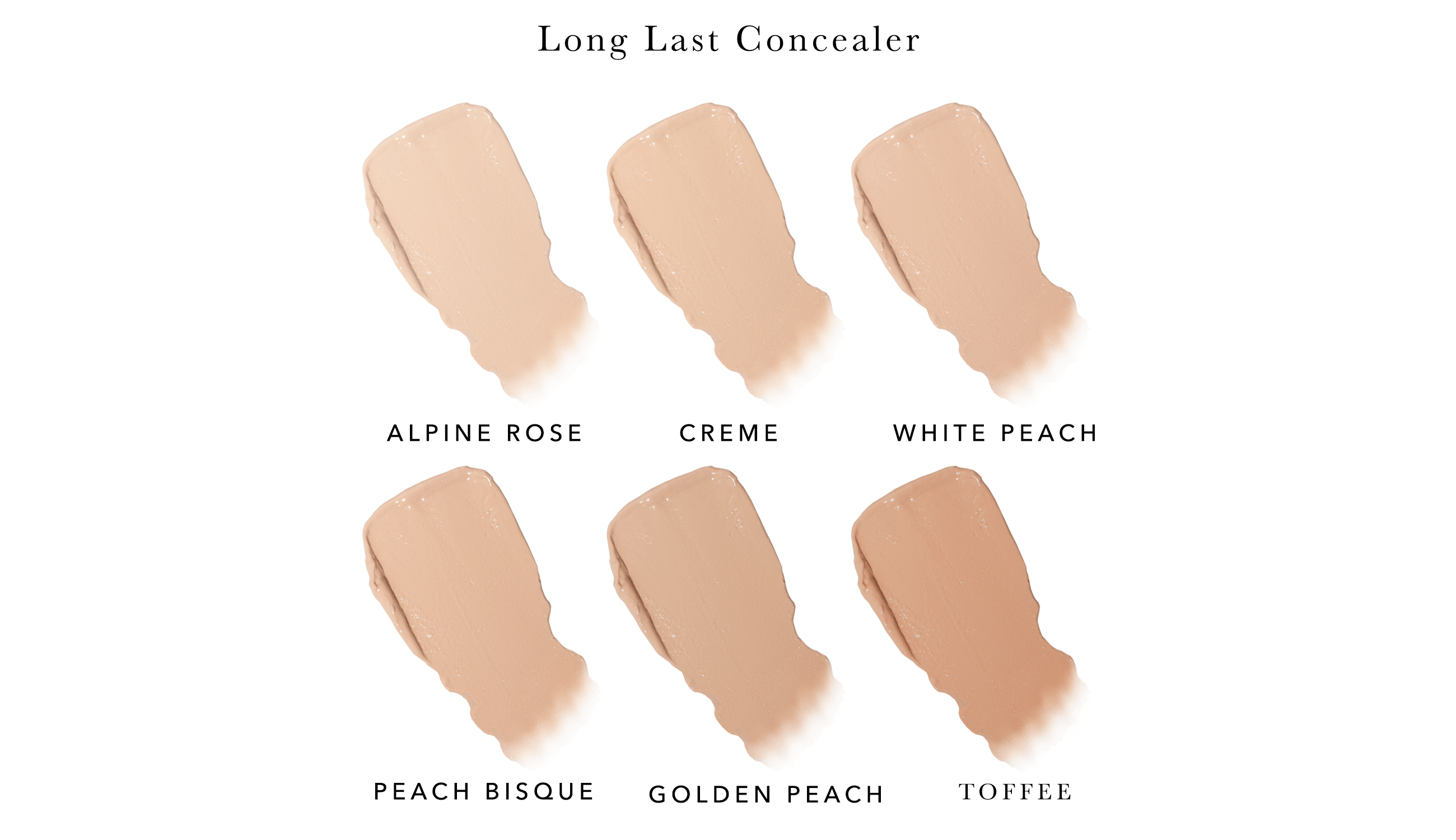
We all need a full coverage natural concealer every now and again on those extra tough breakout days. We’d all rather keep that underwraps, which is why we created this long lasting concealer. This formula is perfect for anyone who needs full coverage to last the entire day; water, sweat and oil don’t stand up to this potent concealer.
The creamy, blendable formula can conceal any imperfections while delivering nutrients, hydration and antioxidants to your sensitive skin. Made with goldenseal, lavender, and chamomile, which soothe inflammation and irritation (great for calming breakout areas). Rosehip oil and shea butter ensure moisture, so skin stays supple and hydrated. Antioxidants from green coffee protect skin from free radical damage, while increasing circulation to help depuff inflamed areas. Ditch your old cakey, toxin-filled concealer pronto and make the switch to clean, green beauty!
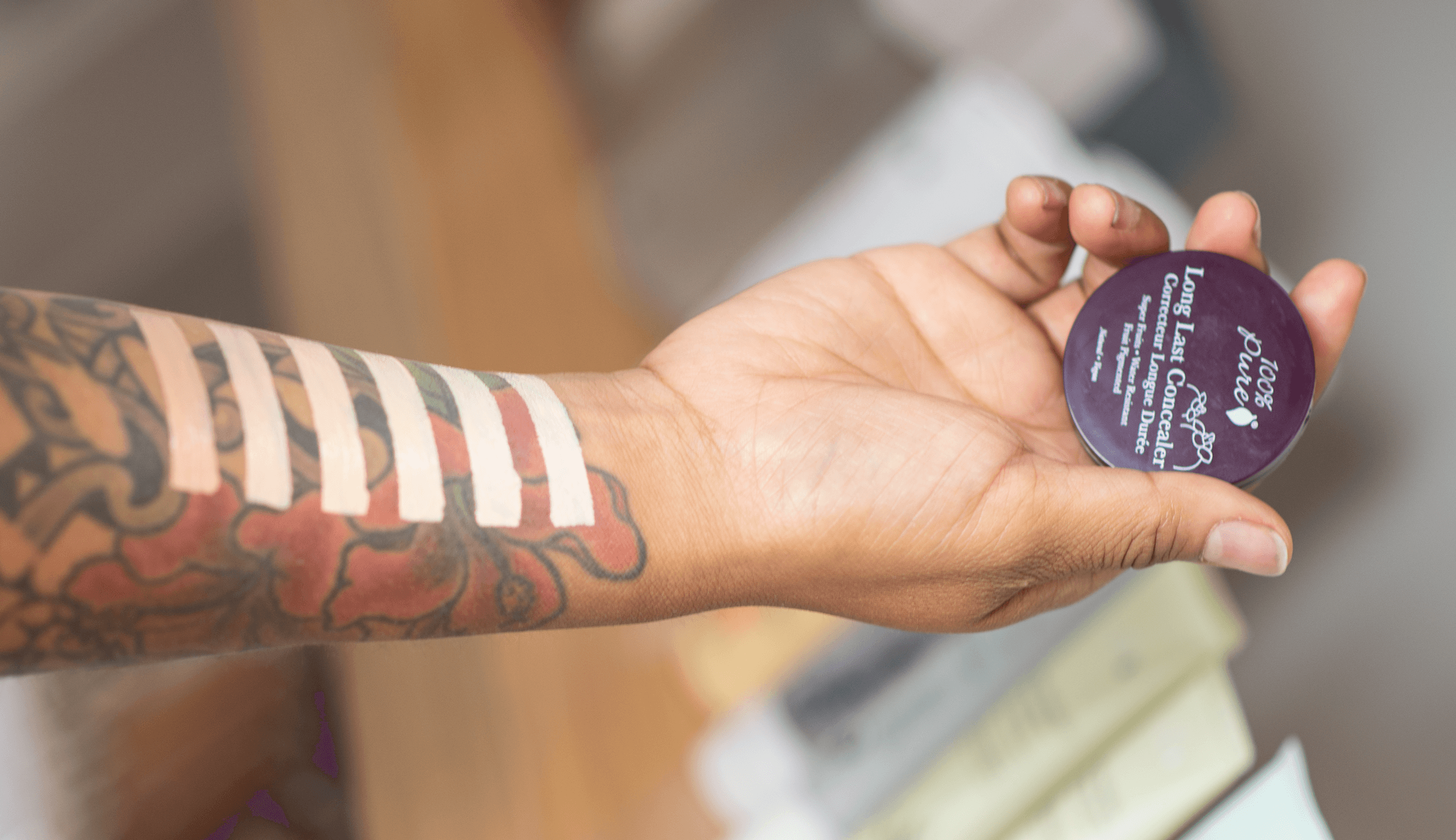
More perks of our Long Last Concealer:
- Extremely moisturizing
- Offers benefits of an eye cream or moisturizer, with rosehip oil and vitamin C
- Perfect for masking dark circles
- Tacky cream formula, good for applying full coverage to small areas like blemishes and dark circles
- Won’t crease or crack, thanks to absorbant base of superfruit oils
How to Apply Concealer
For Acne
Easily the most common reason we all use a concealer in our makeup routine. To reduce your chances of worsening your breakout, avoid using fingers to apply your concealer. Use a clean, small concealer brush to dab concealer onto blemishes, and pat into skin rather than blending completely. Your foundation provides the overall coverage, while your concealer is meant to sit on top of the blemish. The goal is to camouflage your blemish into the rest of your complexion.
PRO TIP: Apply concealer in layers, allowing each to dry before applying this next. If you apply too much too fast, you’re not allowing the concealer to set, meaning less coverage. Applying too fast will also make the concealer look cakey and dark, and your blemish more apparent.
For Dark Circles
Easily the most common reason we all use a concealer in our makeup routine. To reduce your chances of worsening your breakout, avoid using fingers to apply your concealer. Use a clean, small concealer brush to dab concealer onto blemishes, and pat into skin rather than blending completely. Your foundation provides the overall coverage, while your concealer is meant to sit on top of the blemish. The goal is to camouflage your blemish into the rest of your complexion.
To Highlight and Contour
This is one of our favorite alternative uses for concealer, since it means you can use 2 different shades! Our 2nd Skin Concealer is so liquidy smooth that it blends easily on your jawline, cheeks, and bridge of nose. For highlighting and contouring, you can use the sponge applicator wand to apply directly to your skin. Check out our complete breakdown of how to highlight and contour for your face shape!
As an Eye Shadow Primer
Using concealer as a base for your eye shadow will be a gamechanger in your makeup routine. Eye shadow pigments are stunning on their own, but when you add a layer of concealer on your lid, you’re creating a barrier between your skin and the pigment. This barrier means more solid, vibrant color and longer wear. Both natural concealers work beautifully as eye shadow primers. Add concealer to your lid with a small brush, and allow to dry completely before applying your eye shadow on top.
How to Get Color Matched for Concealer
Need help finding your perfect concealer shade? Email our Brand Ambassadors at [email protected] with a picture of your clean, makeup-free face in natural lighting and they can color match you! You can also call 1-844-PURE-100 for any foundation or concealer recommendations as well as application assistance.
- Tags: August-2018, make up, Makeup, Shopping Guides
We carefully hand-select products based on strict purity standards, and only recommend products we feel meet this criteria. 100% PURE™ may earn a small commission for products purchased through affiliate links.
The information in this article is for educational use, and not intended to substitute professional medical advice, diagnosis, or treatment and should not be used as such.


